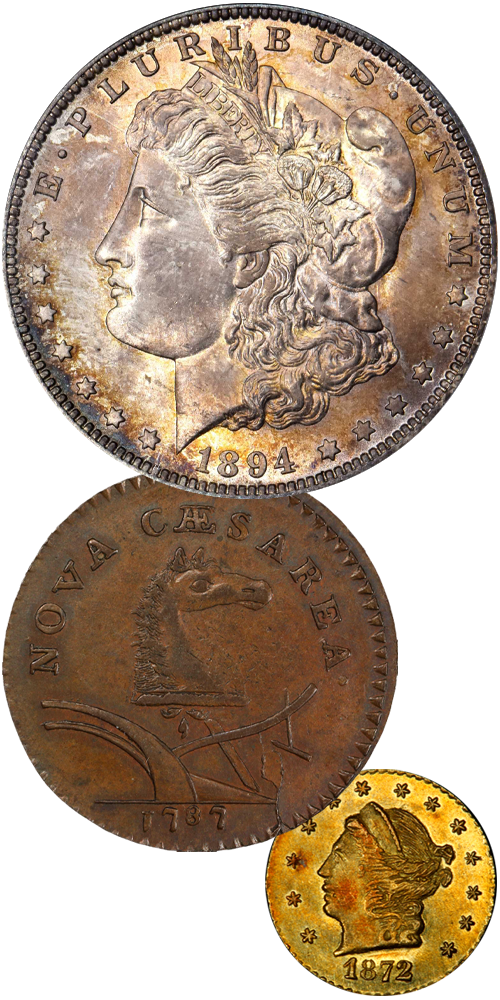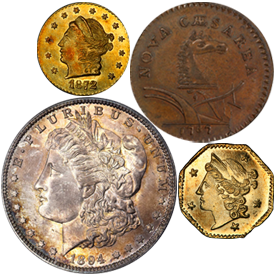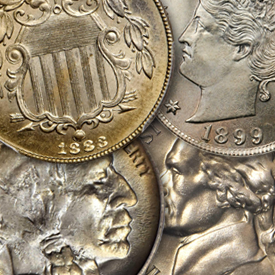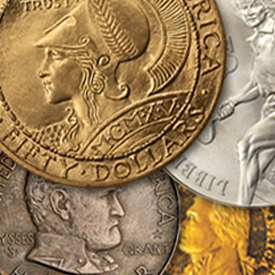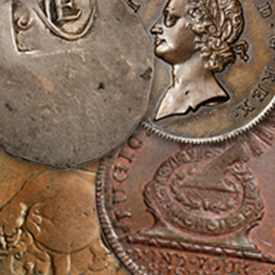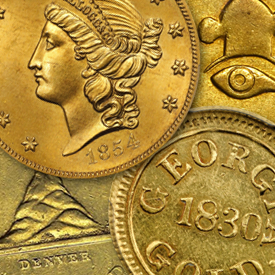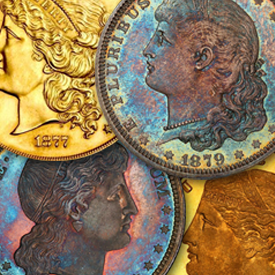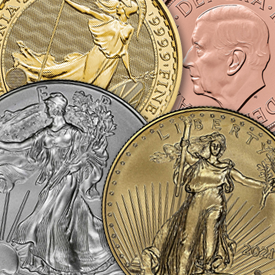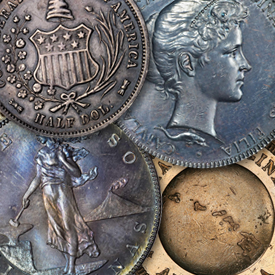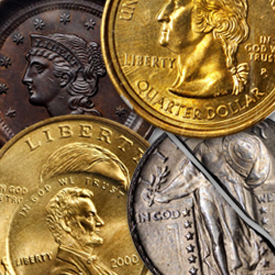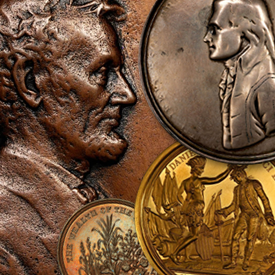Perhaps one of the greatest assets of numismatics is the almost unlimited ways one can go about building a collection of U.S. Coins. From the casual collector who may simply save a few Kennedy halves or Presidential dollars in a drawer, to a Louis Eliasberg who managed to complete the entire collection of U.S. coins, there is a path for every taste and budget. While the makeup and scope of your collection is limited only by your imagination (and budget of course) there are a few widely-recognized approaches others have followed in the past, and can serve as a guide to your own.
The field of U.S. numismatics is quite vast, and can be broken into nine broad areas. There are other minor segments, but these nine account for over 99% of the activity in the hobby today.
1. Regular Issues – these were coins struck at one of the seven U.S. mints or the facility at West Point for circulation in the channels of commerce. Made from 1793 to date, they encompass denominations from a half cent to a Double Eagle ($20) and include coins struck in copper, nickel, silver and gold, and their various alloys. In this group we are also including Proof coins, for while struck specifically for collectors and not for circulation, they are normally collected along with the ordinary business strike issues.
2. Commemoratives – Coins struck by the U.S. mint to mark the anniversary of a special event, or to recognize a cause or individual deemed worthy of honoring on a coin. Commemoratives fall into two main groups – the “classic era” spanning from 1892 to 1954, and the “modern era” spanning 1982 to the present.
3. Colonials – Generally span the period from the early 17th to the early 19th century, and consist of coins either struck in North America or Europe, but saw some circulation in the New World. Most Colonial coins were struck from copper, but a few are known in both silver and gold. The field of Colonials is wide, and includes close to a dozen different sub-areas on which to focus.
4. Territorial Gold – Privately-issued gold coins were struck from the 1830s through the early 1860s near sites where gold had been discovered. The early issues focused on the Southeastern U.S. (North Carolina and Georgia). Following the discovery of gold in California in the late 1840s, a number of coins were struck in the early 1850s in far West. Most Territorial gold coins are fairly rare, and a number of them, prohibitively so.
5. Patterns – Before a coin was issued for circulation, patterns and die trials of various types were usually made. In addition, proposed designs were struck in a variety of metals to see how they might appear. The vast majority of patterns were struck in tiny quantities, and most are rare. A few however, were struck in quantities of several hundred pieces and have been “accepted” by collectors of regular issue coins.
6. Bullion Coins – With the lifting of all restrictions on the holding of gold by U.S. citizens, bullion issues such as the South African Krugerrand, the Canadian Maple Leaf and the Mexican 50-peso gold coin became popular. In 1986, the U.S. mint began to issue its own series of bullion coins (named Eagles) in both silver and gold. Since then, there have been a number of additional series in gold, silver, platinum and palladium.
7. U.S. Territories and Possessions – During the late 19th and early 20th century, coins were struck by the U.S. mint for various U.S. possessions and territories including the Philippines, Hawaii and Puerto Rico. We might mention the Confederate issues as well, though only a few pattern and experimental pieces were made.
8. Errors – The mint is not perfect, and occasionally coins that are defective or have been mis-struck in some way find their way out of the mint and into circulation. The minting process is complex, and quite a bit can go wrong from the wrong planchet to a defective die, multiple or off-center strike and perhaps a half dozen other defects. Most errors are found in the regular issue and colonial fields though a few turn up elsewhere.
9. Exonumia – Tokens & Medals – This is another broad area, and includes private tokens, often issued by merchants to facilitate trade during times of coin shortages, patriotic tokens, medals (which are not coins per se, but are a related field) and exonumia (badges, counter-stamped coins, elongated coins, encased coins, souvenir medallions, tags, wooden nickels and other similar items.)
Since each of these areas can be broken down further into smaller segments, and a variety of ways to collect each of them have been devised, we’ll take a look at each one by one.
